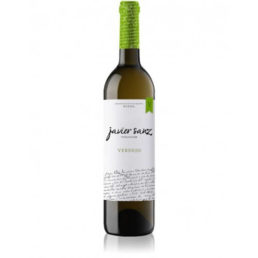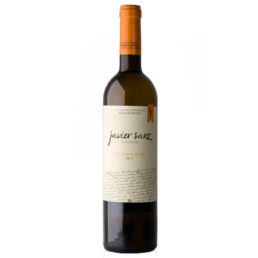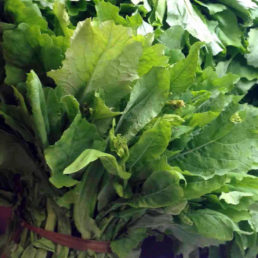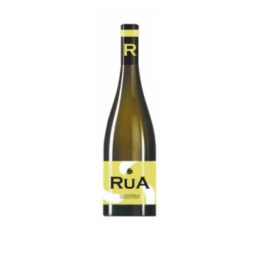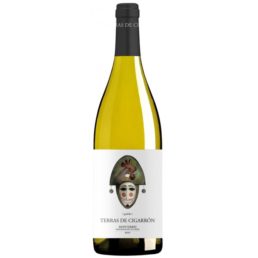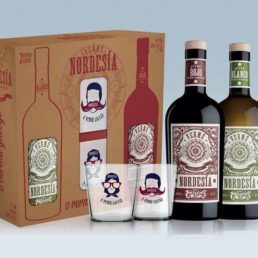Javier Sanz Viticulturist
Showing all 4 resultsSorted by latest
-
White wine Javier Sanz Viticulturist – Javier Sanz Verdejo Magnum
ViticultureVerdejo grapes from which the wine is produced come from our oldest vineyards in La Seca. They are the result of the personal selection of Javier Sanz. Is about 45 ha ha over 40 years of age. The floor where these vineyards is composed of a surface and subsurface pebble clayey, factors that give the wine a touchmineral. The climate is continental with very cold winters, rains during spring andautumn and summers with very high daytime temperatures and drops of up to 20ºC at night. This causes marked continentalidad grapes retain their acidity and aromatic compounds which develop during the day.ElaborationVintage is nocturnal mechanical and is carried out with integrated despalilladora at its ripest. During the fermentation process a rigorous temperature control is followed in order to preserve the maximum flavor characteristics of this wine. Criomaceración, clarified wort gravity for one day. Fermentation at a lower temperature15ºC; in stainless steel. slow fermentation to preserve maximum fruit aromas. Bred with its lees for months before bottling.PairingIt's great to enjoy it as an aperitif or with seafood, salted fish, ceviche, sashimi, etc. Combined with delicate flavors and slightly spicy white fish. -
White wine Javier Sanz Viticulturist – Javier Sanz Sauvignon Blanc
ViticultureThe variety was brought more than 40 years to the area, from France. Strains are located in the place of Camino Real and, for its characteristics, both the type of cluster, and vines, It was adapted exceptionally stony terroir to terroir stony. It has a short vegetative period vegetative and have small leaf, pentagonal, small clusters, very compact, and elliptical berries. The climate is continental with very cold winters, rains during springand autumn and summers with very high daytime temperatures and drops of up to 20 ° C overnight. This causes marked continentalidad grapes retain their acidity and aromatic compounds which develop during the day.ElaborationThe harvest is performed mechanically, night and with integrated despalilladora, at optimum ripeness. The preparation is meticulous, with a criomaceration, clarified wort gravity for one day. Fermentation temperature below 15 ° C stainless steel tank. slow fermentation to preserve maximum aromas.PairingIt will combine with any type of shellfish, natural or lightly cooked; seafood, such as shrimp or crab or just with grilled white fish. Also it combined with cold dishes such as gazpacho, the vichyssoise or goat cheese salad. -
White wine Javier Sanz Viticulturist – Javier Sanz Verdejo 2017
ViticultureVerdejo grapes from which the wine is produced come from our oldest vineyards in La Seca. They are the result of the personal selection of Javier Sanz. Is about 45 ha ha over 40 years of age. The floor where these vineyards is composed of a surface and subsurface pebble clayey, factors that give the wine a touchmineral. The climate is continental with very cold winters, rains during spring andautumn and summers with very high daytime temperatures and drops of up to 20ºC at night. This causes marked continentalidad grapes retain their acidity and aromatic compounds which develop during the day.ElaborationVintage is nocturnal mechanical and is carried out with integrated despalilladora at its ripest. During the fermentation process a rigorous temperature control is followed in order to preserve the maximum flavor characteristics of this wine. Criomaceración, clarified wort gravity for one day. Fermentation at a lower temperature15ºC; in stainless steel. slow fermentation to preserve maximum fruit aromas. Bred with its lees for months before bottling.PairingIt's great to enjoy it as an aperitif or with seafood, salted fish, ceviche, sashimi, etc. Combined with delicate flavors and slightly spicy white fish. -
White wine Javier Sanz Viticulturist – Rey Santo Verdejo
The white wine Javier Sanz Viticulturist Rey Santo Verdejo it belongs to the D. O. Wheel. The culture is done on poor soils with boulders on the surface (what facilitates drainage) and subsoil clay and limestone.












